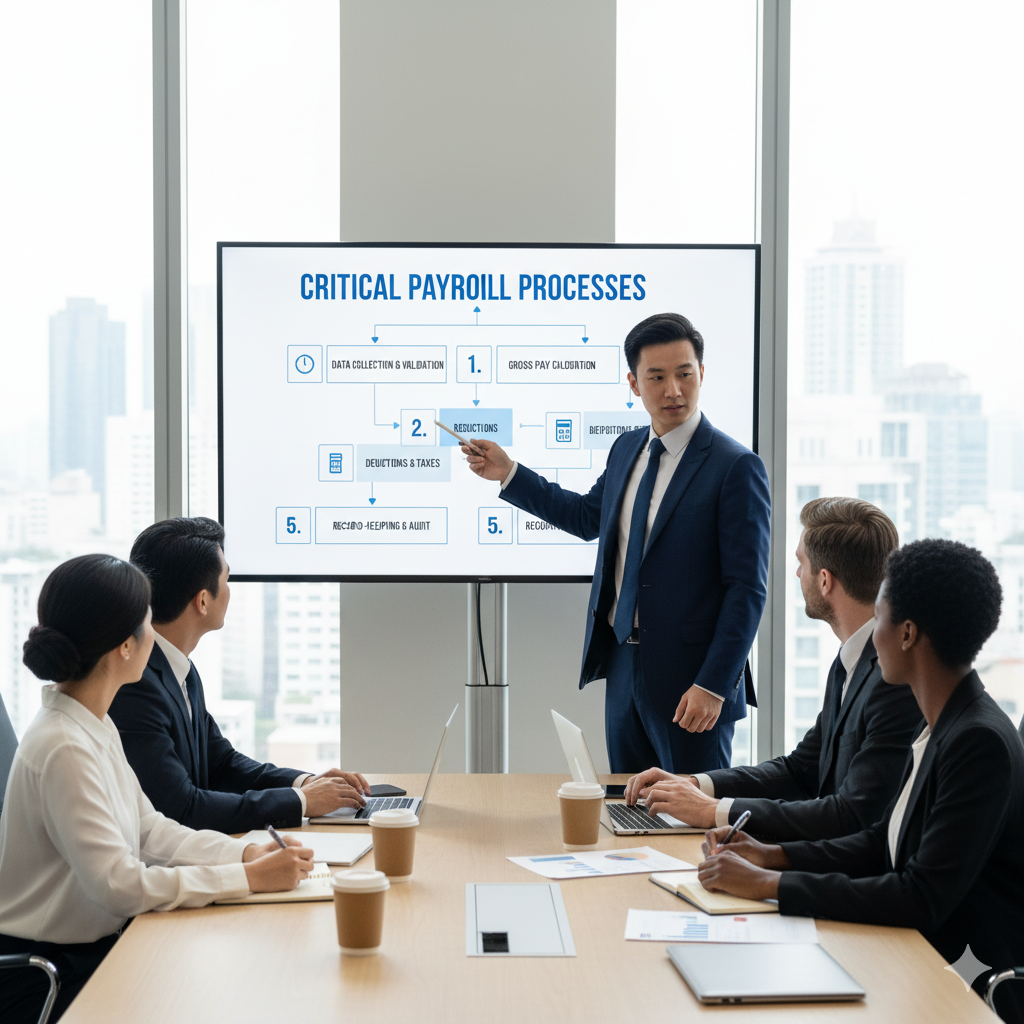Address
Kaypian, San Jose Del Monte City, Bulacan Philippines
Work Hours
Monday to Friday: 8AM - 6PM
Weekend: 10AM - 5PM
Address
Kaypian, San Jose Del Monte City, Bulacan Philippines
Work Hours
Monday to Friday: 8AM - 6PM
Weekend: 10AM - 5PM


Integrated HR. Accurate Payroll.


Integrated HR. Accurate Payroll.

Running payroll isn’t just about paying employees — it’s about accuracy, compliance, and trust. Payroll errors can lead to costly fines, unhappy employees, and even legal trouble. That’s why understanding the most important payroll processes is essential for every business, regardless of size.
Whether you manage payroll manually or use an HRIS and payroll system, knowing the steps involved will help you maintain consistency, transparency, and compliance.
Payroll starts with accurate employee information. Every payroll cycle depends on having complete and updated data.
Key details to collect include:
Maintaining this data in an HRIS (Human Resource Information System) ensures accuracy and minimizes manual errors.
Timekeeping is the foundation of accurate payroll. Without proper attendance data, even the best systems can make mistakes.
Best practices:
Modern HRIS and payroll systems can automatically sync attendance and leave data, ensuring payroll runs smoothly.
Once attendance data is ready, it’s time to calculate earnings.
Components include:
Automation is key. A good payroll system calculates all of this instantly, reducing the risk of human error and ensuring employees are paid accurately and on time.
Every business must comply with local labor and tax laws. This means accurately deducting and remitting:
Compliance ensures your company avoids penalties, audits, and employee disputes.
Choose payroll software that automatically updates to reflect changes in tax laws and compliance rules.
Before processing payments, conduct a thorough review and approval process.
Checklist:
Many organizations implement multi-level approval to ensure accountability and prevent fraud.
After final approval, payroll moves to the payment stage.
Options include:
Ensure your payroll schedule is consistent — weekly, bi-weekly, or monthly — to maintain employee satisfaction and financial planning.
Transparency builds trust. Every employee should receive a payslip showing:
Digital payslips are now standard and can be automatically generated through modern HRIS platforms.
They’re not only convenient but also eco-friendly and secure.
Keeping organized payroll records is vital for:
Most countries require businesses to retain payroll data for several years. Cloud-based HR systems make this easy by securely storing all payroll reports and employee records.
After payments are complete, businesses should:
Regular payroll audits ensure long-term compliance and operational efficiency.
Payroll data includes sensitive employee information.
To protect it:
A secure and well-maintained payroll system not only protects your data but also boosts employee confidence.
Understanding and managing payroll effectively is more than a routine task — it’s a critical business function that impacts employee trust, legal compliance, and organizational reputation.
By mastering these most important payroll processes, your business can ensure accuracy, compliance, and employee satisfaction.
And remember — the right HRIS and payroll system can simplify every step, allowing you to focus more on growth and less on paperwork.